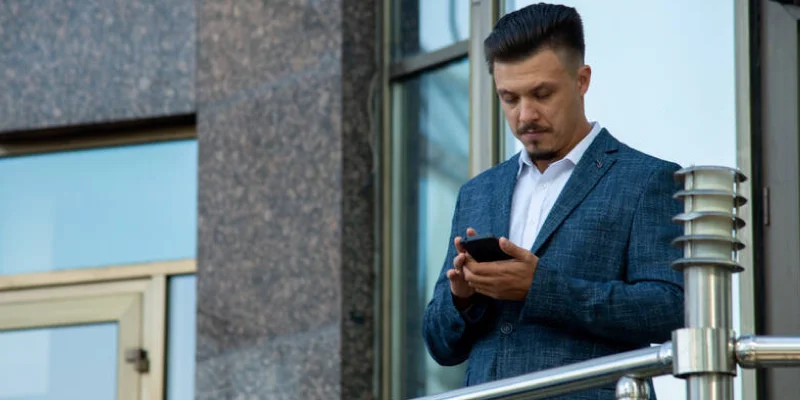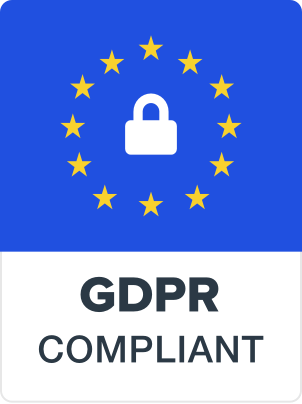How can you perform a Rental Property Inspection?

May 28 , 2024
Are you a landlord or rental property manager dealing with conflicts regarding tenants’ disagreements about the property’s condition, tenants entering the living room feeling privacy is affected, negotiating disputes, or arranging tenant schedules and preparing documentation?
If this is the case, doing a rental inspection can be an operational nightmare.
Still, you need to perform it to secure your and your clients’ invested cash, give 100% protection to your tenants, and keep up the property’s value. As such, rental inspections foster trust and keep communication open between tenants and landlords or rental property managers.
But this doesn’t imply that you, as a property manager, have a bundle of checklists and reports for each rental property.
With the arrival of digital facilities like UrAudits, an audit app, you can do digital property inspections, where you can have user-friendly dashboards, real-time reports, pre-made templates, an advanced scoring system, etc., using your fingers.
This article will explain rental inspection, its types, how to perform it, and how the UrAudits inspection app can be a true innovator.
Let’s start!
What is a Rental Inspection?

It is a process of inspecting a property you rent to another person or tenant.
You can inspect it in front of the tenants, but it is not necessary
The core purpose is to ensure the house is in good condition throughout the rental period.
Most of the time, this is done when tenants move in or out.
Also, the landlords or rental property managers have the legal right to inspect even if tenants enter the house, but for that, a notice that we are moving will be given to check the house’s condition.
If the tenant causes damage, the landlord or a rental property manager can compensate the tenant by deducting the cash from security deposits or asking the tenant to repair the damage, as mentioned in the lease agreements.
What Must Landlords/Rental Property Managers Check For During Tenancy Inspections?
Here are the essential things to check when doing a rental inspection: –
- Wall and Ceiling: – Holes, cracks, unnecessary grease, water damage, and flaking paint.
- Floors: Check that they are free from stains, unnecessary wear and tear, or damage.
- Plumbing: To spot water leakage or improper sanitation, check for drips, leaks, and clogged drains under tubs, sinks, and toilets.
- Electrical System: Check overloaded outlets, exposed wiring, and flickering lights to stop fire hazards.
- Doors and Windows:- For safe tenant entry, check for no damaged frames or broken glasses and confirm they work perfectly and lock securely.
- Smoke detectors: If you have these, check that they work perfectly and are correctly installed.
- Lightning: – To stop tripping hazards, check for proper lighting in all rooms for any exposed wiring or faulty fixtures.
- Outdoor areas: – Check for fences, gates, and other outdoor facilities are fully workable.
- Compliance with the rental agreement: This covers inspecting unauthorized changes, following up on pet policies, etc.
Moving forward, to confirm all the above things remain checked, here are some essential inspection checklists for rental properties.
- Flat inspection
- Pest control
- Move-out and Move-in inspection
- Vacant property inspection app
- Fire safety inspection
- Rental walkthrough
- Residential property inspection
- Residential plumbing
- Residential fuel gas piping
- HVAC maintenance
- ADA Checklist for Existing Facilities
- Defect Checklist Template
Four tenants’ home Inspection Types

Now, let’s review some inspection types and perform inspections according to the date and time of the most recent inspection.
Move-in inspection
Landlords or rental property managers perform this inspection before the tenants move in with their stuff.
They use the move-in checklist to check the damages in the house.
Quarterly or Bi-annual Inspection
Such inspections are performed every 3 or 6 months. Tenants are noted with the exact date and time that landlords or rental property managers are coming to do the inspection.
Such inspections help both parties assess the condition of the house. If the tenants cause damage, they will correct it. Doing these checks helps ensure everyone is following the compliance mentioned in the lease agreement.
Outside Property inspection
It is also called a visual inspection performed outside of the property—there is no need to inform the tenants in advance.
Although this inspection occurs very little, it helps detect action if one wants to know what is happening outside of the property.
For example, if you see a car parked in the driveway of a lot whose license plate doesn’t match the one listed in the lease, it could mean someone living there who shouldn’t be.
Move-out Inspection
The name suggests the inspection before the tenants leave the property. The purpose is to check if tenants have done any damage to the house,
If yes, deduct the amount from the security deposit listed in the lease.
When doing a move-out inspection, check everything, and for proof, save it in photo form in the inspection report so you can deduct the correct amount from the security deposit.
Also, you can show the move-in inspection copy and compare it with the current property condition.
Most of the time, tenants renew the lease agreement yearly and remain there for about 5 or 10 years.
Thus, finding reports of the old move-in checklists and periodic checklists from the cabinets becomes difficult.
In such cases, the digital solution “UrAudits,” an audit application, can be a great help. You can save all your previous inspection data and get it in PDF form when needed. Our clients’ inspection data are stored in the cloud until you delete them.
Try the UrAudits inspection application for free for a 14-day trial.
How can you carry out a Rental or Landlord inspection?

Let’s discuss the stages covered in rental/landlord property inspection: –
Stage 1: Analyze the Lease Agreement
The lease agreement is crucial here, so always obey it, whether as a landlord or rental property manager at inception. Avoid breaching the contract during the inspection.
Review the agreement with full attention. Notify your tenants 1 or 3 days before the inspection.
But this can vary depending on the laws in your area, so make sure you know what they are.
Stage 2: Schedule Inspection in the presence of the tenant
It is unnecessary, but you prefer to ask the tenants to be there, mainly when doing an annual or semiannual inspection, so the tenant can also detect any issues and know the house’s condition.
The tenants are not required to be present for the quarterly inspections, but they should be notified beforehand of the purpose of the inspection.
Stage 3: Use a Detailed Rental Inspection Checklist
As previously mentioned, try using all the checklists to track everything, maintain a defect record, and submit the inspection report to the stakeholders.
Remember, doing this inspection traditionally is very challenging, as there are multiple documents with multiple cabinets; finding them is like hitting your head on a stone.
There is a chance of misplacement, and you cannot add all the checklists in the reports to share with all parties.
Here comes UrAudits, a digital audit app that helps eliminate this tedious task. You can customize all the inspections in single platforms the way you like and email them to the involved parties on the spot.
Stage 4: Take images of Defective Things
Remember to take photos when inspecting and save them as proof. When you send them to the tenants, you can claim them to get the damage repaired; otherwise, deduct the security deposit amount in cash.
Stage 5: Build and send Inspection Reports to involved parties
This is imperative for the rental property manager, who must send the inspection report to the involved parties. The report must contain all the inspection results in detail, along with images of the identified defects.
If the clients want comparative data, mention the previous inspection results data helpful in the move-out inspection.
In this scenario, the UrAudits digital inspection app can help you generate real-time reports feature and can be shared via email to the parties involved.
Stage 6: Allot Repairs/Fixes to Contractors and Monitor Progress
Traditionally, assigning contractors to recover the defects takes time.
However, with the UrAudits checklist app, you can allot a contractor to the contractor for repair during the inspection and create a digital checklist for this task for follow-up.
Best Practices of Property Rental Inspections
Let’s discuss the best practices when doing rental property inspection:-
- Notify the tenants before 1 or 3 days before as per the local laws.
- Encourage the tenant to be at home by signing the document from the tenants
- Avoid taking images of personal things, such as PCs, people, or pets.
How much time does it requires to do a rental property Inspections?

The time you invest in rental inspection relies on two aspects: –
Inspection Type
When tenants move out, everything is empty and won’t take much time.
As you are already done with the move-out inspection, the move-in inspection won’t take much time. Here, you only check the repairs and analyze the current situation.
Routine inspections won’t occur if the tenant is trustworthy, as you only emphasize compliance-related factors and maintenance issues.
Rental Property Inspection Checklists
A detailed checklist is necessary for a comprehensive rental inspection. Covering all checklists from start to finish allows for a stringent inspection.
On overage, two and a half hours were consumed for a rental unit inspection, and to go back and build a property condition report took another 2 to 3 hours.
But with the digital solution “UrAudits” audit app for Play Store or Android, you can reduce the time by: –
- Digital checklist
- Automatic real-time digital reporting
- Enhance communication with inspection report sharing via automatic email
Why are Daily Rental Property Inspections Significant?
Here are the reasons that rental inspection is highly mandatory-
- Protect your investment
- Ensure tenant safety
- Maintain property value
- Create Trust with Tenants
- Enforce lease agreements
- Peace of mind that everything inspected
UrAudits: The ideal Inspection Digital Tool for inspecting Multiple Rental Properties
UrAudits is an audit app for App store or iOS that manages rental properties digitally. You can make a digital checklist per the inspection property type and use it as often as possible.
- Perform inspection both offline and online
- Instant rental Property Inspection Reports
- User-friendly dashboards
Download our digital audit app for iOS or Android.
Copyright © 2024 Uraudits.com. All Rights Reserved. Privacy Policy | Legal | Terms of Use
Privacy Overview
| Cookie | Duration | Description |
|---|---|---|
| cookielawinfo-checbox-analytics | 11 months | This cookie is set by GDPR Cookie Consent plugin. The cookie is used to store the user consent for the cookies in the category "Analytics". |
| cookielawinfo-checbox-functional | 11 months | The cookie is set by GDPR cookie consent to record the user consent for the cookies in the category "Functional". |
| cookielawinfo-checbox-others | 11 months | This cookie is set by GDPR Cookie Consent plugin. The cookie is used to store the user consent for the cookies in the category "Other. |
| cookielawinfo-checkbox-necessary | 11 months | This cookie is set by GDPR Cookie Consent plugin. The cookies is used to store the user consent for the cookies in the category "Necessary". |
| cookielawinfo-checkbox-performance | 11 months | This cookie is set by GDPR Cookie Consent plugin. The cookie is used to store the user consent for the cookies in the category "Performance". |
| viewed_cookie_policy | 11 months | The cookie is set by the GDPR Cookie Consent plugin and is used to store whether or not user has consented to the use of cookies. It does not store any personal data. |









